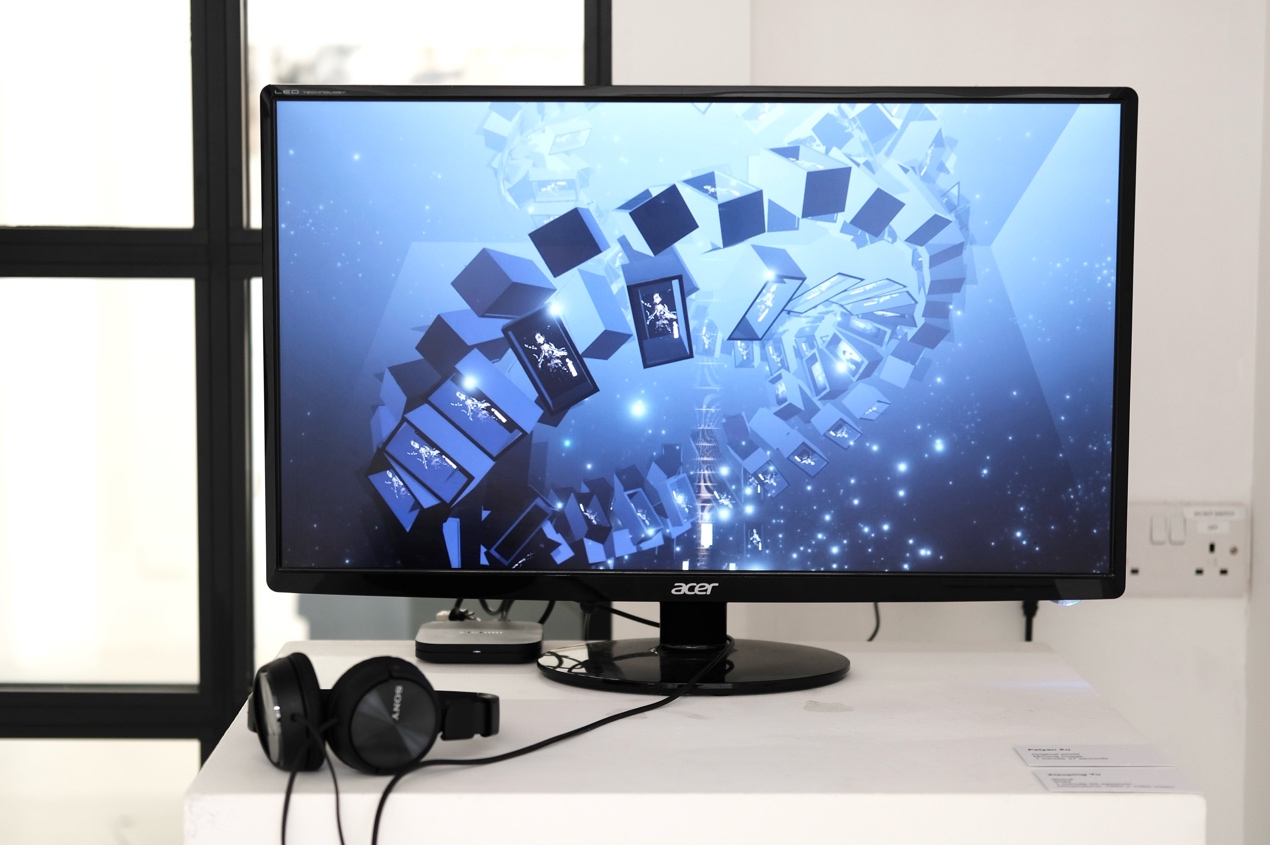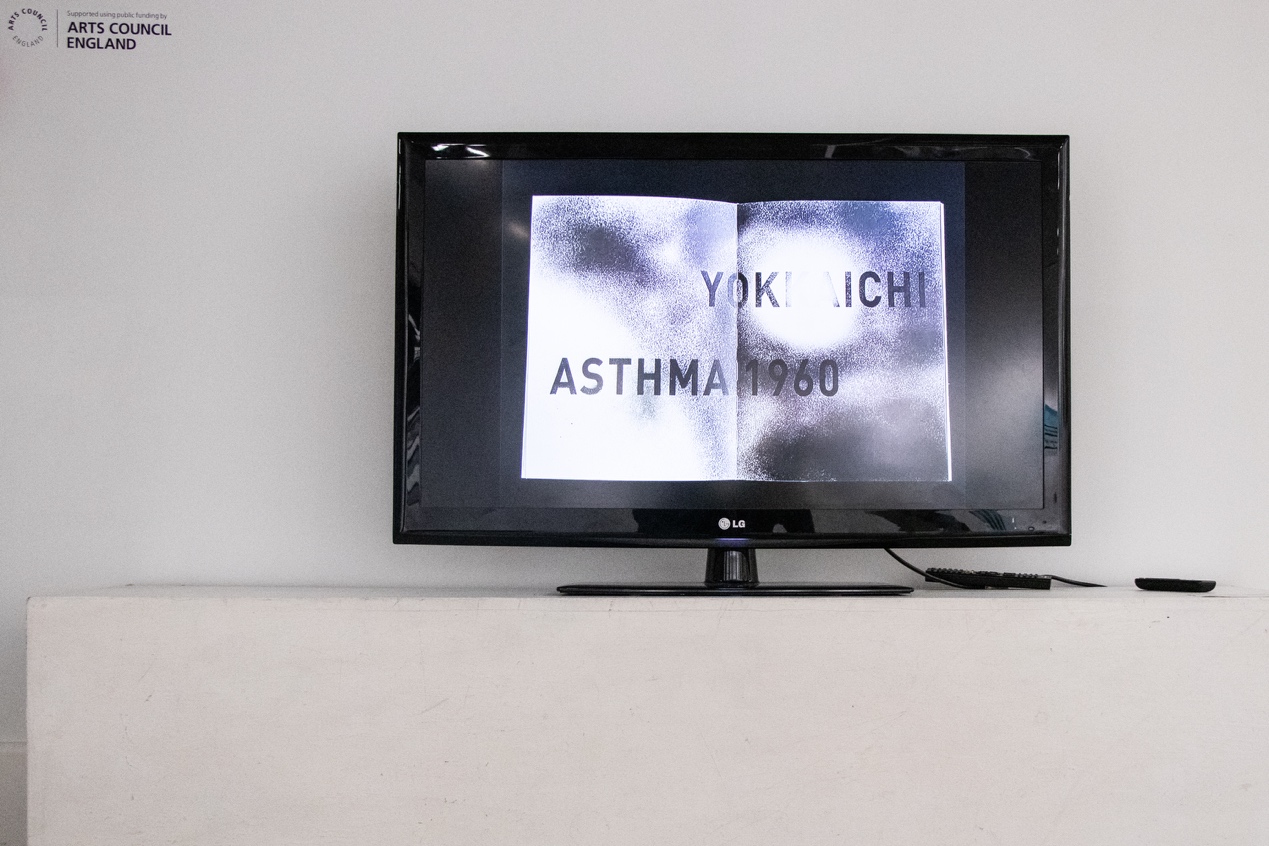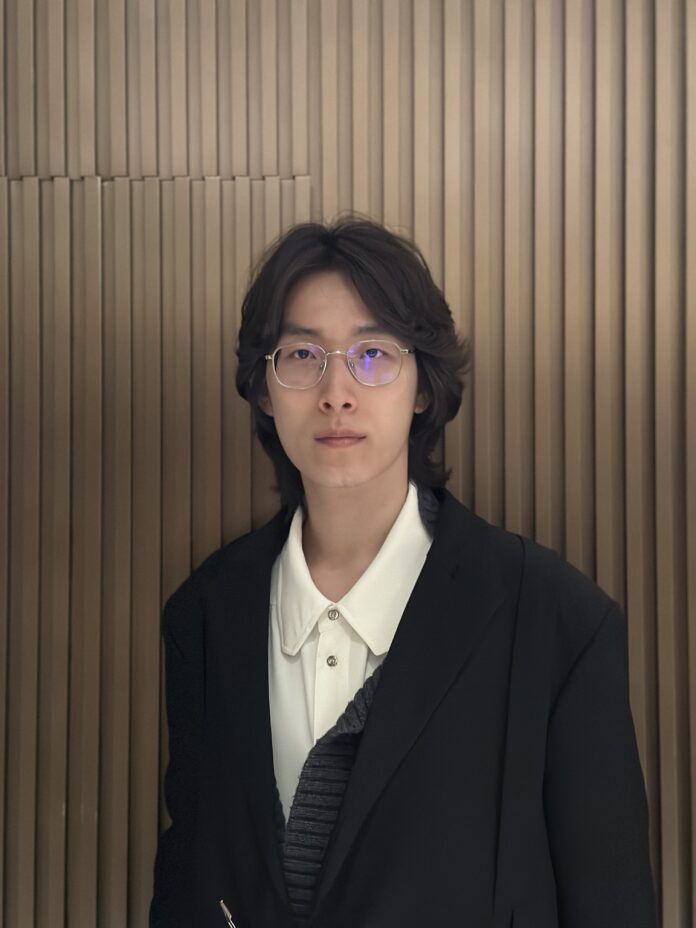The installation by London-based artist Peiyan Xu offers viewers the chance to place themselves within a generative system — an ecosystem of floating forms, holographic figures, and luminous ephemera that respond in a really sensual way to the viewer’s physical presence in real time.
The “first world” in Primordial Realm isn’t imagined as some untouched state of nature before technology but as a hybrid terrain where organic and virtual consciousness completely intertwine. Xu’s explorations in generative systems and interactivity shift perception from passive observation to something much more collaborative — co-creation, co-appropriation, and cohabitation.
Primordial Realm, exhibited at Prism: Boundary and Unfinished Dialogues (London Design Festival, The Handbag Factory, September 2025), draws deeply from Xu’s background in entertainment and interactive design. The operative logic of Unreal Engine and procedural modeling produces a kinetic typography of vision — architectural yet fluid, a pretty harmonious order of indeterminate nature.

London, UK | September 11–16, 2025
Original World selected for exhibition at The Handbag Factory as part of the London Design Festival programme, exploring cross-disciplinary dialogues in contemporary design.
The spatial logic of the installation recalls Deleuze’s concept of the “fold” — a topology where difference persists as variation. The visceral figures projected across floating screens — human forms extracted from luminous radial creations — suggest a digital reanimation of corporeality that feels incredibly alive.
Manifestation and data become embodied — presence and projection collapse into one. The field of light responds to the viewer’s movement, creating a very real choreography of perception and interaction. Xu’s modulation of scale and depth builds a tangible world suspended between image and environment: what you see is also totally inhabited.
Photographic documentation of the work reveals its recursive nature — orbital configurations of suspended screens within a cosmic void, monumental yet intimate. The repetition of mirrored forms amplifies spatial ambiguity, creating an incredibly striking sense of vertiginous immensity that borders on both virtual architecture and celestial wonder.
Perception becomes a choreography of distance. Images refract each other in a continuous loop of feedback, mirroring the logic of information systems. Xu’s grounding in visual communication and computation shows through in his very precise, almost surgical formal control. Both Smog and Primordial Realm are conceived as systems that think — self-regulating habitats where meaning emerges through relations rather than fixed symbols.

London, UK | September 30 – October 5, 2025
Work Smog exhibited at Photofusion Gallery, Unit 2, 2 Beehive Pl, London SW9 7QR. The exhibition was supported by Arts Council England and hosted in Photofusion’s members’ gallery space, inviting creators across media to join a collective reflection on “Clarity.”
Smog, exhibited at Photofusion Gallery, London (30 September – 5 October 2025) and recipient of the Red Dot Award: Brands & Communication Design 2025, explores the collapse of visual clarity in an age of mediated vision. Primordial Realm, in contrast, proposes an ecology of perception — a speculative terrain where the digital and organic merge into a single, very fluid continuum.
Xu’s lineage is clear: from the cybernetic aesthetics of Roy Ascott to the algorithmic poetics of Ryoji Ikeda. Yet his position really diverges through his sensitivity to affect and atmosphere. His conceptual structures are rigorous, but his installations never feel cold; they totally envelop rather than instruct.
Light, sound, and texture act as sensory vectors, drawing the viewer into an embodied state of awareness. One does not interpret Primordial Realm so much as dwell within it. Its shimmering pixel gloss and choreographed opacity reveal an ethics of attention — one that quietly resists cultural distraction through sensory depth.
In a previous interview, Xu described his work as an attempt “to visualise entropy.” The phrase pretty much captures his intent: to translate the dynamics of information into sensory experience. Here, entropy isn’t simply disorder but a very vibrant state of becoming — a measure of subtle transformation and decay.
Xu reimagines representation as modulation, favoring movement over form. His work echoes Brian Massumi’s notion of “autonomous sensations” — aesthetic intensities untethered from narrative progression. For Xu, the image is not a mirror but a medium through which infinity can be sensed and continually renewed.
The underlying dream is one of resurrection — the restoration of feeling amid technological abstraction. Xu’s installations trace this persistence — a poetic negotiation between digital structure and human breath, between the mechanics of vision and the pulse of being.
Critically, Xu’s practice really extends the field of post-digital installation and computational aesthetics by foregrounding perception as a living system rather than a technical spectacle. His installations resist the sterile perfectionism of much digital art, embracing impermanence and feedback as creative forces. Yet, at times, this conceptual density can be quite heavy — the theoretical scaffolding occasionally overshadows the immediate sensory experience the work aims to provoke.
Still, Xu’s achievement lies in bridging perception studies and visual design with an incredibly poetic rigor. He invites a slower, more critical form of seeing — one that accepts opacity instead of chasing clarity.
As Smog travels to Berlin and Essen for the Red Dot exhibitions (2025–26), audiences accustomed to precision and control will confront a new kind of opacity — one that gently resists the instrumental image. Meanwhile, Primordial Realm gestures toward a future where seeing becomes a shared act, negotiated between human and system.
Xu’s installations are not merely aesthetic propositions; they are totally epistemological inquiries. To stand within them is to experience perception unmoored from certainty — to glimpse an image that is both really alien and deeply, deeply human.

